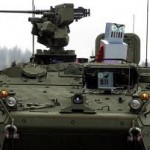The idea of using robot combatants in war that might someday replace or supplement soldiers has stirred discussion.
Some believe that robots can undertake attacks with negligible risk and casualty to the people who operate them, detractors say that robots lessen the obstacle to warfare.
“Wars will be started very easily and with minimal costs,” said Wendell Wallach, a scholar at the Yale Interdisciplinary Center for Bioethics and chairman of its technology and ethics study group.
Civilians will be endangered while critics argue because of the difficulties in distinguishing between fighters and bystanders.
This problem has already been encountered with Predator aircraft, which find their targets with the help of soldiers on the ground but are operated from the United States.
Civilians in Iraq and Afghanistan have died as a result of collateral damage or mistaken identities.
“A lot of people fear artificial intelligence, ” said John Arquilla, executive director of the Information Operations Center at the Naval Postgraduate School.
“I will stand my artificial intelligence against your human any day of the week and tell you that my A.I. will pay more attention to the rules of engagement and create few ethical lapses than a human force.”
Dr. Arquilla argues that weapons systems controlled by software will not act out of anger, malice and in certain cases, can already make better decisions on the battlefield than humans.
Automation has proved important in the wars America is fighting. In Iraq and Afghanistan, unmanned aircraft with names like Predator, Reaper and Raven have kept countless soldiers from flying sorties.
Moreover the military now alternately utilizing more than 6,000 teleoperated robots to search vehicles at checkpoints and also disarming one of the enemies’ most efficient weapons, the improvised explosive device or IED.
The group known as the International Committee for Robot arms Control, said warfare accelerated by automated systems, undermining the capacity of human beings to make responsible decisions.
A good example, is the gun that was designed to function without humans could shoot an attacker more quickly and without soldier’s consideration of delicate factors on the battlefield.
“The short term benefits being derived for robotizing aspects of warfare are likely to be far outweighed by the long term consequences,” said Mr. Wallach, the Yale scholar, that wars would occur more readily and that a technological arms race would develop.
In 2001, Congress gave the pentagon the goal of making 30 percent of the ground combat vehicles operated through remote by 2015. That seems unlikely, but there have been significant steps in that direction.
Military technologists assert that tele-operated , semi autonomous and autonomous robots are the best way to protect the lives of American troops.
To follow military rules of engagement the Modular Advanced Armed Robotic System (MAARS) has more recently been equipped with a loudspeaker as well as a launcher so it can issue warnings and fire tear gas grenades before firing its machine guns.

